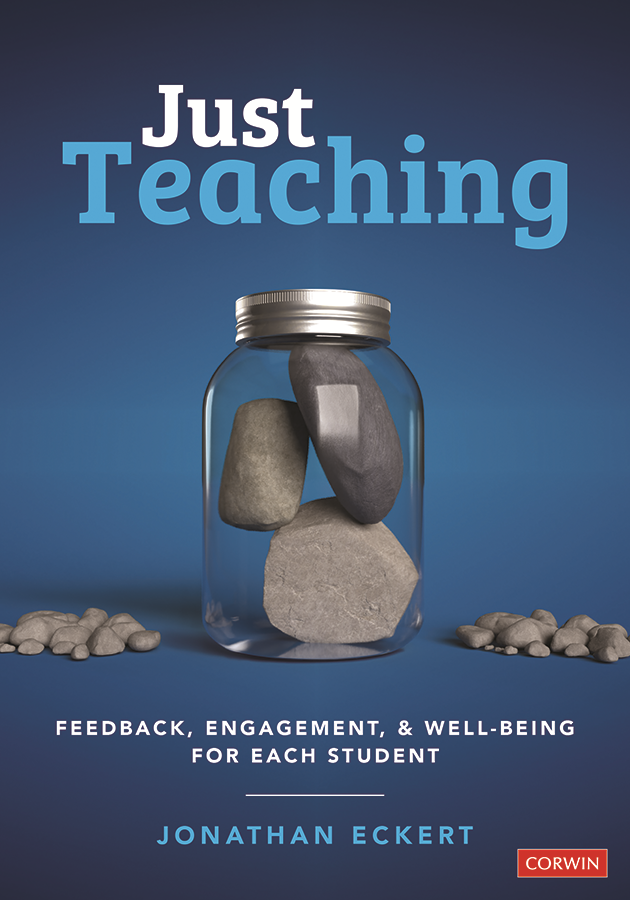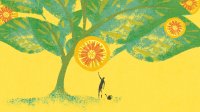4 Norms for Creating a Human-Centered Classroom
Teachers can focus their energy on creating a classroom focused on the students themselves, rather than outcomes, by helping them build relationships and develop a more robust sense of self.
Your content has been saved!
Go to My Saved Content.If you are a teacher, you can only control what is within your sphere of influence, so we will start in the classroom to understand purpose-driven flourishing. Your influence extends far beyond the classroom and can be maximized when efforts extend schoolwide. Here are some classroom norms and rituals you can put into place right now that can put humans before outcomes.
Classroom norm #1: Tell students who they are becoming
Bob Goff, a lawyer turned inspirational author and speaker, regularly reminds us to tell others who they are becoming—not who we want them to be or who we wish we were. To do this, we need to be able to identify attributes of each student and then be able to articulate those attributes. Be sure to keep the attributes positive. Goff’s point is that we help speak into being the attributes that we see, so going negative does not help anyone.
To know how best to tell students who they are becoming, we do have to remember that all relationships, particularly those of teachers and students, go through stages. Teachers and students go through four discrete stages (modified from Cooper & Simonds, 2007):
- Initiating: This is our first impression. Much of this will be non-verbal, but we will make many judgments within our first 30 seconds with our students. While these insights can be valuable, this is not the time to make major judgments about who a student is becoming and certainly is not a time for definitive pronouncements.
- Experimenting: This is where we test our students, and more importantly, they test us. How much can they get away with? What are the actual expectations? Is this a safe place to take risks? In the first few weeks of the semester, students are experimenting to see what we are all about, and we are testing them to see what they are capable of accomplishing. This is still not the ideal time for making significant pronouncements about who students are, but we are certainly making and testing hypotheses.
- Deepening: Most of the year is a mix of experimenting and deepening. The sooner students feel like they know what they can expect from us, the deeper the relationship can go. We know how to encourage, exhort, and motivate, and they know who we are as educators. While the relationship is deepening, we should have multiple opportunities to tell students who they are becoming.
- Morphing: The end of the school year is always filled with melancholy for me. We are no longer a class, and in some ways, the teacher-student relationship ends. I prefer to think of the relationship morphing as opposed to ending. For most of us who do not loop with our students, they will be in many other classes the following year. We need some closure so that we can move into a new phase of relationship that is more collegial. This is different with a fifth grader than it is with a graduate student, but we get one last chance at the end of the year to tell our students who we see them becoming. We can approach that in different ways. For me, this means each student gets a book with an inscription inside. When I taught younger students, it was a portfolio of their work, pictures from the year, and a handwritten letter. We need to communicate how we have seen them grow and who we see them becoming.
Classroom norm #2: Be Real
I grew up in a small town in Indiana (think Hawkins, Indiana from Stranger Things), when I was in seventh grade, I wanted to be Lance Parker. He was the best basketball player in the grade above me, had perfectly feathered and mulleted hair, always had a comb sticking out of his back pocket, was typically wearing any one of a rainbow of Coca-Cola rugbies, and was trailed by adoring middle school girls. You knew you were in the presence of greatness when you called out, “Hey Lance!” with a tinge of middle school desperation. You knew that you could not hope for an audible greeting much less your name, but maybe he would deign to give you a head nod.

I have no idea what happened to Lance, but I know many of our students have aspirations of being someone else. Sadly, many of us can fall victim to this same desire of being someone else—like the cool ELA teacher down the hall who has five or six students hanging out in his room after composing slam poetry, or your colleague who is the Joanna Gaines of classroom interior design—but this is doomed to failure.
Be the best version of yourself. This sounds trite and relatively cheesy, but this is so essential and there just is no other way to say it. If you love Abbott Elementary, Jane Austen novels, the Chicago Cubs, Wordle, cooking, or Star Trek, let your students see this about you. They need to know you love them, but they also need to know what else you love. You are uniquely you, by teaching from that identity, you communicate that your students can also be themselves.
Be the best version of yourself every day. This is not another task or a mask to put on each day. This is much more like the app, BeReal, than Instagram. Instagram is a curated, polished view of our world that leads to crushing comparisons where reality cannot hold up against the unreality of filters, performance, and selective disclosure. Millions of high school and college students are using BeReal to celebrate more of who they really are each day. Once a day, BeReal notifies users to upload a picture of what they are doing at that moment—no filters and no reality altering narratives. To see anyone else’s post, the user has to post first. This is liberating.
We can speak, act, and teach in ways that give life or suck the soul out of life. Our students deserve a consistent, positive constant in their lives and that can be us. When I am the best version of myself and teaching from my own identity, I am much more likely to find joy consistently. When I taught science to middle school students, I did not always feel like the best version of myself at the beginning of a day or class period. However, my students deserved the best version of a science teacher I could be, and I was only as good as my worst day. The good news is that even when I did not always feel like the best version of myself, reminding myself that my students deserved this would enhance my well-being and improve my teaching.
Classroom norm #3: Connect strangers
Especially when we teach in kindergarten, large middle schools, sprawling high schools, or any school with high levels of transience, we are connecting strangers. If the primary reason kids do not like school is loneliness (Brooks, 2021), then teaching strangers is an essential skill we have to master. I make it a practice to memorize all my students’ names on the first day of class regardless of the class size, which for me has never been more than 100. If I have access to their pictures in our learning management system before the semester, I study them for the week or two leading up to the first day. Then I visualize students’ names written on their foreheads and then use their names as frequently as I can during the first class. They cannot leave until I have called each one by name from memory. The logic here is that everyone is gracious the first day. While it is an ambitious goal to do this the first day and you might not always achieve it, at least you will be well on your way. What is unforgivable is not knowing names after the first few weeks.
A name gives us an entry point into a relationship. A name does not constitute a relationship, but it is typically a pre-condition. I have also realized it is not enough for me to be the only one who knows all the names in a class, because we are not a community if we do not know each other at least by name. One of the things that always surprises me about college classrooms is how few students know each other’s names. That is why I use Paideia Seminars.
Classroom norm #4: Focus on skills, shots, and scrappiness
If I were to distill just teaching into one phrase, it would be to give each student what they need. This is justice. This is just teaching. In his book Outliers, Malcolm Gladwell (2008) asserts that people are successful when they have skill, opportunity, and grit. To “Hamiltonize” that, students need skill, a shot, and scrappiness.
- Skill – We all need some baseline level of skill to be successful. Alexander Hamilton definitely had a solid baseline that he developed in school, business, and the law. As educators, we also have to have some baseline skills in a pedagogical content area and with people.
- Shot – Lin Manuel Miranda’s Alexander Hamilton raps eloquently about his desire for a shot. He just wants the opportunity to be successful. As educators, we get to connect students with opportunities. Allowing students to work on real-world problems, connect with experts, or serve their communities allow them the opportunity to connect with something bigger.
- Scrappiness – Alexander Hamilton was nothing if not “young, scrappy, and hungry.” He outwrote, outworked, and outhustled everyone. No one succeeds without some level of skill, but as Angela Duckworth (2016) points out, effort counts twice as we develop skill. We need some baseline level of talent with which we exert effort to initially develop a skill, then we take that skill, apply effort and achieve. Consider teaching as an example. We need some talent for a subject and the ability to work with others. We exert effort to enhance both our pedagogical knowledge of the subject and those we are teaching which results in some level of skill. We continue to develop our teaching skills with effort, which leads to better achievement for our students.
Giving each student what they need means developing skills, giving them a shot, and helping them develop scrappiness. This does not mean that we can intrinsically motivate students because, by definition, intrinsic motivation must come from within the student. As educators, we create conditions where students can develop skills, have an opportunity, and can develop passions that can lead to scrappiness.
Eckert, J. Just Teaching: Feedback, Engagement, and Well-Being for Each Student, pp. 53-58. Copyright © 2023 by Corwin Press. Reprinted by permission of Corwin Press. (Readers can order this at a 20 percent discount by using the code SAVE20.)
